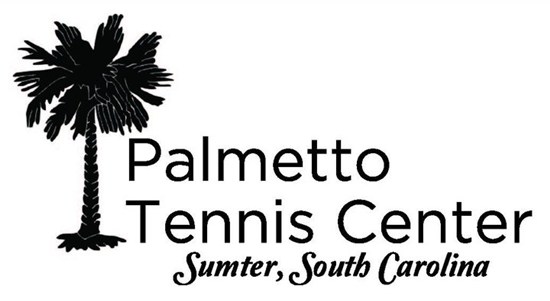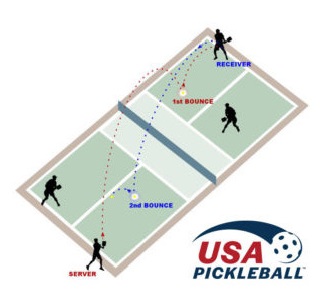It Is Time to learn about Pickleball!
One of America's fastest growing sports with approximately 36.5 million people playing worldwide. The sport was invented in 1965 by three middle-aged fathers in Washington state. The founders are said to have named the game after the family dog called Pickles.
Pickleball is a paddle sport that combines elements of tennis, badminton, and ping-pong using a paddle and plastic ball with holes. It is a game that is appropriate for players of all ages and skill levels. A pickleball court is smaller than a tennis court, gameplay allows players to be close enough to one another that they can hold conversations. If you are looking for some great exercise for your mind and body, pickleball can’t be beat. Playing pickleball allows you to work on your balance, agility, reflexes, and hand-eye coordination without putting excessive strains on your body.
Pickleball is a must try and FREE to play!
Come to the Palmetto Tennis Center to play on One of four pickleball courts today!
If you are interested in Private or Group Lessons from the Palmetto Tennis Center Certified Pickleball Professional please call 803-774-3969 today!
**If you are new to the sport and need to borrow a paddle and balls the PTC has free loaner equipment available in the main office.
The Sumter County Pickleball Association plays regularly at the Palmetto Tennis Center. They love to play weekday mornings and on the weekends! Play-in rotations are on going to continuously include new players. Friendly play atmosphere is always on court! (Indoor play available at the North Hope Center, Birnie Hope Center and Parks & Recreation)
If you would like to talk to a Sumter County Pickleball Ambassador please call Bob Kennedy at 803-464-2643.
How to Play Pickleball
Pickleball is played either as doubles (most common) or singles. Games are typically played to 11 and must be won by at least 2 points. Only the serving team can score points.
The Serve
The server’s arm must be moving in an upward arc when the ball is struck.
Paddle contact with the ball must not be made above the waist level.
The head of the paddle must not be above the highest part of the wrist at contact.
A ‘drop serve’ is also permitted in which case none of the elements above apply.
At the time the ball is struck, the server’s feet may not touch the court or outside the imaginary extension of the sideline or centerline and at least one foot must be behind the baseline on the playing surface or the ground behind the baseline.
The serve is made diagonally crosscourt and must land within the confines of the opposite diagonal court.
Only one serve attempt is allowed per server.
Service Sequence
Both players on the serving doubles team could serve and score points until they commit a fault *(except for the first service sequence of each new game).
The first serve of each side-out is made from the right/even court.
If a point is scored, the server switches sides and the server initiates the next serve from the left/odd court.
As subsequent points are scored, the server continues switching back and forth until a fault is committed, and the first server loses the serve.
When the first server loses the serve the partner then serves from their correct side of the court (except for the first service sequence of the game*).
The second server continues serving until his team commits a fault and loses the serve to the opposing team.
Once the service goes to the opposition (at side out), the first serve is from the right/even court and both players on that team have the opportunity to serve and score points until their team commits two faults.
In singles, the server serves from the right/even court when his or her score is even and from the left/odd when the score is odd.
*At the beginning of each new game only one partner on the serving team could serve before faulting, after which the service passes to the receiving team.
Scoring
Points are scored only by the serving team.
Games are normally played to 11 points, win by 2.
Tournament games may be to 15 or 21, win by 2.
When the serving team’s score is even (0, 2, 4, 6, 8, 10…) the player who was the first server in the game for that team will be in the right-side court when serving or receiving; when odd (1, 3, 5, 7, 9…) that player will be in the left-side court when serving or receiving.
Two-Bounce Rule
When the ball is served, the receiving team must let it bounce before returning, and then the serving team must let it bounce before returning, thus two bounces.
After the ball has bounced once in each team’s court, both teams may either volley the ball (hit the ball before it bounces) or play it off a bounce (ground stroke).
The two-bounce rule eliminates the serve and volley advantage and extends rallies.
Non-Volley Zone
The non-volley zone is the court area within 7 feet on both sides of the net.
Volleying is prohibited within the non-volley zone. This rule prevents players from executing smashes from a position within the zone.
It is a fault if, when volleying a ball, the player steps on the non-volley zone, including the line and/or when the player’s momentum causes them or anything they are wearing or carrying to touch the non-volley zone including the associated lines.
It is a fault if, after volleying, a player is carried by momentum into or touches the non-volley zone, even if the volleyed ball is declared dead before this happens.
A player may legally be in the non-volley zone any time other than when volleying a ball.
The non-volley zone is commonly referred to as “the kitchen.”
Line Calls
A ball contacting any part of any line, except the non-volley zone line on a serve, is considered “in.”
A serve contacting the non-volley zone line is short and a fault.
Faults
A fault is any action that stops play because of a rule violation.
A fault by the receiving team results in a point for the serving team.
A fault by the serving team results in the server’s loss of serve or side out.
Determining Serving Team
Any fair method can be used to determine which player or team has first choice of side, service, or receive. (Example: Write a 1 or 2 on the back of the score sheet.)


